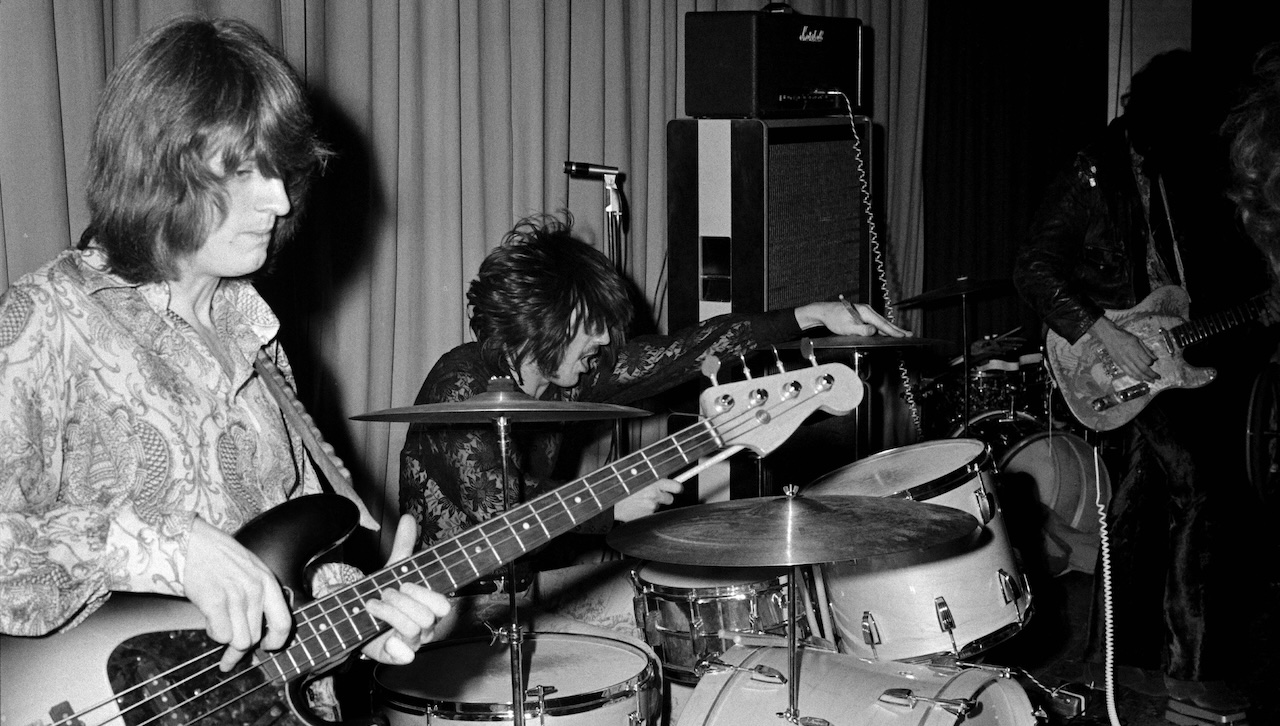“It’s not about playing whatever the lowest note available is. You have to consider melody, rhythm and harmony”: Listen to John Paul Jones’ isolated bass on Led Zeppelin’s Ramble On
Recorded in 1969 when John Paul Jones was just 23, Ramble On stands apart from the rocked-out blues songs that dominate Led Zeppelin II

Heavier, groovier, and more melodic than their debut, Led Zeppelin II replaced The Beatles at the top of the album chart in Feb 1970. For much of the album, John Paul Jones doubles Jimmy Page’s guitar riffs, helping the songs achieve the potency a generation of headbangers came to love. But that wasn’t all, as the expertly nimble bass playing on Ramble On showed.
“You’ve got to have the big picture in mind when you’re playing bass guitar,” Jones told Bass Player. “It’s not about playing whatever the lowest note available is. You have to consider melody, rhythm and harmony.”
Jones had big plans when he wrote the opening line. First, he stepped all over Page’s gorgeous acoustic intro with a fantastic ascending motif in the upper register. Then he threw in a three-note lick after the first line of the chorus (after “Ramble on!”) which in turn sets up a bar in which he performs very fast hammer-ons, making the bass guitar the focus of the line when there’s plenty going on already, not least Robert Plant’s wailed vocal.
The track starts with Jimmy Page's quick, 16th-note acoustic strum and John Bonham's mellow yet persistent percussion. Rather than following his bandmates rhythmic frenzy, Jones generated the relaxed and memorably melodic line in the verse.
With the track playing along or a guitarist friend copping Page's part, play just the first bar. Notice any major difference between what you and your 6-string compadre are playing? In the same space as Page's 16th-note acoustic strum, you've plucked just two syncopated notes. The pacing contrast is similar in bar 2, where the bass part moves up to the A chord, closing with off-the-beat accents.
The syncopation continues in bars 3 and 4, but that's only part of what makes the second phrase rhythmically interesting. When you look at the whole phrase, you can see note values getting shorter and shorter: First there are quarter-notes, then eighth-notes, then a 16th-note turnaround at the end of bar 4.
Music theorists call this rhythmic acceleration. By moving to smaller note values, the bassline makes the whole song feel like it quickens, adding tension and excitement with each four-bar cycle.
Get The Pick Newsletter
All the latest guitar news, interviews, lessons, reviews, deals and more, direct to your inbox!
Check out the isolated bassline below.
Rhythmic acceleration isn't shaping only the four-bar verse phrases; it also shapes the whole song. The pre-chorus bass lick has quarter-note-based phrases in bars 1 and 3, and begins to mix in eighth-notes and 16ths. The song climaxes with urgent 16th-note riffs in the chorus.
The last piece you'll need to put the song together is the bridge line, which fits between the second chorus and third verse. Here, while Jimmy Page swaps strummy acoustic playing for twin electric licks, Jones takes on the rhythmic accents that pulsated through that original 16th-note acoustic part, emphasizing beat one, the ‘and’ of two, and four, embellishing the part with well-placed hammer-ons.
As when practicing the easy-feeling yet rhythmically precise verse and powerful chorus, remember that you're doing more than just learning a classic bassline. You're also gradually grasping concepts that can help enhance your creativity and build confidence for making up your own parts.
Jones said it best himself when we spoke to him in July '03: “A lot of younger musicians don't understand that you can move the beat around against a pulse, but we used to do it all the time – and that would change the tune's dynamic.
“Sometimes we knew we were doing it, and we'd have fun seeing exactly how far we could lay back – but generally it was instinctive. We'd know there was a song section that needed a bit more urgency but didn't want to go any faster, so we'd get just get more on top of the beat and push it, but without speeding it up.”

Nick Wells was the Editor of Bass Guitar magazine from 2009 to 2011, before making strides into the world of Artist Relations with Sheldon Dingwall and Dingwall Guitars. He's also the producer of bass-centric documentaries, Walking the Changes and Beneath the Bassline, as well as Production Manager and Artist Liaison for ScottsBassLessons. In his free time, you'll find him jumping around his bedroom to Kool & The Gang while hammering the life out of his P-Bass.
“I asked him to get me four bass strings because I only had a $29 guitar from Sears”: Bootsy Collins is one of the all-time bass greats, but he started out on guitar. Here’s the sole reason why he switched
“I got that bass for $50 off this coke dealer. I don’t know what Jaco did to it, but he totally messed up the insides!” How Cro-Mags’ Harley Flanagan went from buying a Jaco Pastorius bass on the street to fronting one of hardcore’s most influential bands

![Led Zeppelin - Ramble On (Live at the O2 Arena 2007) [Official Video] - YouTube](https://img.youtube.com/vi/EYeG3QrvkEE/maxresdefault.jpg)










